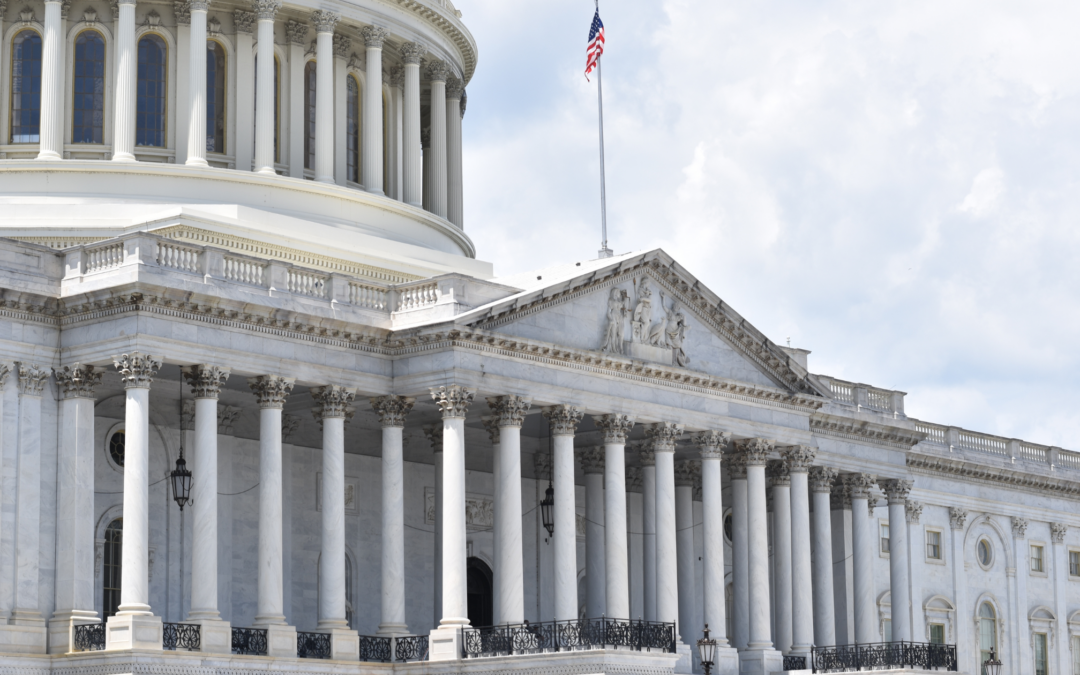
How a Government Shutdown Impacts the Economy
As the ongoing government shutdown rapidly crosses historic thresholds, its economic and societal impacts have already become evident. These disruptions have already magnified and, in some cases, redefined the inherent challenges of a full-scale government shutdown, which paralyzes federal operations while interrupting economic activity that extends deep into the private sector. Each closure, whether partial or prolonged, reorders spending, jeopardizes contracts, and shakes financial confidence.
In this sense, the current shutdown’s scope of impact depends on the duration and breadth of agency closures, but the economic ripples reach far beyond Washington.
Federal Operations and Spending Flows
When agencies close, federal payrolls pause, procurement contracts stall, and essential project approvals freeze. Federal employees who temporarily lose paychecks curtail discretionary spending, affecting local economies – particularly in regions with large government workforces. Businesses that rely on federal contracts or grants experience delayed payments and suspended operations, which can quickly strain cash flow and workforce stability. Even short disruptions cause measurable contractions in output, as thousands of transactions between the government and private sector suddenly stop.
Economic modeling of previous shutdowns, such as those in 2013 and 2019, reveals the direct link between halted federal expenditures and declines in quarterly GDP growth. These slowdowns typically reverse once government operations resume, but recovery periods vary depending on the backlog of delayed activities and the level of public confidence afterward. For industries tied to federal funding—defense, infrastructure, research, and healthcare—a prolonged closure can hinder multi-year projects, distort budgets, and alter investment expectations.
Market Confidence and Financial Conditions
Investor sentiment often shifts as uncertainty intensifies. Treasury yields fluctuate when debt service discussions coincide with shutdowns, as investors weigh potential delays in federal payments. Financial markets generally maintain liquidity, yet heightened uncertainty affects risk premiums, borrowing costs, and equity valuations in sectors sensitive to government activity. Consumer confidence also softens during extended closures, reflecting reduced trust in institutional reliability.
Businesses often delay hiring and capital expenditures when fiscal operations appear unpredictable. The private sector, especially small and mid-sized enterprises that contract with federal agencies, encounters difficulties maintaining stability without reliable payment cycles. Financial institutions, in turn, must adjust lending models when their clients’ government-linked revenues remain uncertain. Over time, this layering of caution creates broader drag on growth through tightened financial conditions and reduced private investment appetite.
Long-Term Business and Policy Implications
Beyond immediate losses, repeated shutdowns introduce structural inefficiencies into the economy. The interruption of data collection from federal statistical agencies limits decision-making for businesses, analysts, and investors. Economic forecasting weakens when key indicators (i.e., employment, inflation, and trade data) become unavailable, leaving firms without reliable metrics to guide strategic planning.
Operational delays also affect regulatory reviews and public-private collaborations, which are essential to long-term growth initiatives. Infrastructure projects, environmental permits, and healthcare research all depend on steady administrative oversight. Each pause forces organizations to reassess timelines and costs, reducing the predictability needed for sustained investment. Over time, the economy absorbs not only lost output but also diminished institutional credibility, as recurring shutdowns signal fiscal instability to both domestic and international observers.
Economic consequences of a government shutdown extend through payrolls, supply chains, and market psychology, leaving measurable footprints across both public and private systems. While recovery follows the resumption of operations, the cumulative toll from uncertainty and interrupted activity shapes broader confidence in economic governance.
Appraisal Economics closely monitors these developments, providing quarterly economic reviews that help clients interpret fiscal shifts and their implications. As part of a comprehensive suite of valuation services, these reviews support informed decision-making in an ever-changing and often turbulent economic environment.

How AI is Impacting Social Media Content Creation
Artificial Intelligence is transforming how content is created, shared, and consumed across social media. It is no longer a futuristic concept but an active driver reshaping creator workflows, marketing strategies, and audience engagement. From ideation to distribution, AI is redefining every stage of the content lifecycle.
Efficiency, Scale, and Automation
AI’s ability to help brands and creators accomplish more in less time is among its most important accomplishments. From prompts, tools with huge language models and natural language processing (NLP) capabilities can produce postings, captions, and even brief articles. AI can automate several aspects of social posting, like creating clever captions, editing photos, and even creating films. AI makes it possible to produce more content without requiring as much work. Because of this “size at speed” benefit, producers can continue to post often on a variety of platforms.
Beyond generation, AI assists with research, ideation, and trend detection. For instance, by using AI to handle time-consuming chores like data analysis, SEO optimization, and topic research, artists may concentrate on more strategic or creative work.
Personalization, Targeting & Content Optimization
AI’s ability to analyze massive amounts of information and spot trends is crucial for matching viewers with content. Social media companies use AI to rank or suggest posts according to each user’s interests, past interactions, and engagement patterns. AI assists content makers in determining which themes or forms are likely to resonate through sentiment analysis and predictive modeling.
Users are guaranteed to view material that aligns with their preferences, thanks to brand-side AI-driven ad targeting and content personalization. AI enables advertisers to optimize ad targeting, boosting relevance and engagement. Appinventiv explains how AI also helps with social networking app customer care automation, comment moderation, and content feed curation.
Real-Time Analytics, Feedback & Adaptive Content
AI enables fast feedback loops. It can monitor how posts perform (engagement, sentiment, shares) in real time and suggest tweaks, repost timings, or even new angles. The Impact of Artificial Intelligence on Social Media Content underscores that real-time content analysis is a key way AI changes the dynamics of content creation and distribution. Because AI can quickly spot emerging trends or shifts in audience mood, creators can pivot faster than ever.
Risks, Ethics, and Creative Authenticity
Despite its advantages, AI also introduces challenges that creators and platforms must grapple with:
- Filter bubbles and echo chambers: By heavily personalizing content, AI may confine users to material that reinforces existing beliefs, reducing exposure to differing views. This raises concern over algorithmic bias and diminished diversity in content exposure.
- Misinformation and deepfakes: AI makes it easier to generate convincing fake images, videos, or text. This heightens the risk of disinformation spreading on social networks. The ScienceDirect review flags “Deep Fakes and Fake News” as a significant theme in the AI-social media convergence.
- Creativity vs generic output: Overreliance on AI may lead to formulaic or hollow content. There is a tension between efficiency and maintaining authenticity.
- Skills shift and job displacement: Due to the potential threat to some content roles, creators may need to adapt their skill sets. If AI is not balanced with human values, critics warn that jobs may be lost.
- Transparency and trust: If AI-generated content is not made public, users may feel duped. To keep users’ trust, platforms should implement ethical and transparent AI use.
Best Practices for Creators in The AI Era
- AI should be used as a co-pilot, not a substitute. Allow it to do data analysis, ideation, and drafting. But always bring your voice, viewpoint, and genuineness.
- To detect mistakes or misalignments, strike a balance between automation and human inspection.
- When content is AI-assisted, disclose it (particularly if it’s branded or sensitive).
- Keep investing in skills that machines struggle with: storytelling, cultural insight, and emotional nuance.
- Monitor ethical dimensions like bias, representation, and misinformation, and push for transparency from platforms.
The extent to which AI enhances or detracts from the social media ecosystem will depend on how platforms and producers balance automation and human authenticity while preserving variety and trust. And, it’s trust that Appraisal Economics offers for technology valuation services!

Current State of Fast-Casual Franchises
Fast-casual franchises are a staple of the dining sector, bringing a unique take on speed, quality control, and brand engagement. Franchise operators have matured from their early focus on experimentation and niche appeal into highly structured businesses that leverage supply chain discipline, brand differentiation, and menu innovation to capture share across multiple demographics. The current environment rewards those systems that understand both the operational efficiencies of quick service and the consumer-driven emphasis on perceived freshness and customization.
Growth Anchored in Operational Sophistication
Investment in fast-casual franchises increasingly centers on scalable models supported by advanced data capabilities. Multi-unit operators rely on precise demand forecasting, effective inventory controls, and advanced labor scheduling technology to maintain their margins in an environment of rising costs. Unlike earlier waves of expansion, where sheer footprint growth defined success, today’s leading brands emphasize unit economics that withstand fluctuations in commodity prices and labor markets. This approach reflects the professionalization of franchise systems, where private equity, institutional investors, and multi-brand operators scrutinize profitability metrics before committing capital.
Operational discipline extends to real estate strategy. Prime urban corridors once defined the category, but franchise operators now favor suburban and secondary markets where delivery, drive-thru, and pickup models integrate more seamlessly. Landlords have also recognized the enduring traffic-driving power of fast-casual brands, often structuring favorable leases to anchor new developments. These shifts in site selection reveal a franchise environment less concerned with trend-driven growth and more focused on sustainable, diversified footprints.
Consumer Expectations Driving Menu and Experience
Culinary positioning continues to evolve as fast-casual chains refine their approach to balancing innovation with reliability. Customers demand the consistency of established favorites while expecting rotating offerings that reflect broader food trends and regional influences. Brands respond with modular menu platforms that allow cost-effective seasonal updates without disrupting core supply chains. The ability to test limited-time offerings and rapidly scale successful items system-wide has become a hallmark of the strongest players.
Equally critical, the guest experience now extends well beyond the four walls of the restaurant. Mobile ordering platforms, integrated loyalty programs, and third-party delivery partnerships represent standard requirements rather than differentiators. Franchise operators measure success through digital engagement metrics that mirror e-commerce benchmarks, with customer acquisition and retention strategies increasingly resembling those of direct-to-consumer retail brands.
Investment Outlook and Market Pressures
Even though capital continues to flow toward fast-casual franchises, investor scrutiny has intensified. Rising buildout costs and construction delays have slowed expansion for smaller systems, while established brands with proven throughput and digital adoption draw more favorable terms. Inflationary pressures remain a constant factor; however, many franchises offset these through menu engineering, automation, and shared services across their multi-unit portfolios. The capacity to adapt pricing without eroding perceived affordability defines much of the current competitive landscape.
Mergers, acquisitions, and portfolio consolidations illustrate another layer of market maturity. Larger operating groups view fast-casual units as reliable cash-flow contributors, often bundling them with complementary quick-service or casual dining assets. This consolidation reflects a more disciplined investment climate where scale and systemwide efficiencies outweigh the speculative growth stories that once dominated the segment.
Fast-casual franchises have transitioned from disruptors to established mainstays of the foodservice industry; their continued success depends less on novelty and more on integrating operational precision, technology-driven engagement, and disciplined growth strategies. Operators and investors who understand these dynamics position themselves to capitalize on the next phase of expansion, where scale and adaptability matter as much as culinary innovation.
For stakeholders and professionals seeking clarity on valuation for franchise systems, our team at Appraisal Economics delivers the detailed financial analysis and market insight necessary to guide investment decisions and long-term strategic planning. For more information visit our Food & Beverage page!

Private Equity’s Desire for Accounting Firms
Accounting firms have drawn more interest from private equity in recent years than many observers anticipated. This trend reflects a deep structural shift among modern buyers, who are perceiving accounting practices as recurring-revenue engines ripe for technological upgrades, roll-up consolidation, and margin expansion via operational discipline. Private equity groups now primarily view these targets as core platforms in professional services,
Motivations Behind The PE Entry
Private equity firms prize accounting practices for their predictability: recurring fee income from audits, tax, and advisory engagements produces relatively stable cash flow even in economic downturns. Those firms often lack the capital to modernize their tech stacks, invest in AI-driven audit tools, or expand across different geographies; PE can provide not only capital but also execution capacity.
Additionally, many firm owners want liquidity but prefer staying involved; minority or staged exits give them flexibility. PE-backed models also allow consolidated back-office support, shared infrastructure, and acquisition by roll-ups, which in turn delivers economies of scale across smaller practices. The alternative practice structure (APS) model, where a non-CPA affiliate owns non-attest services while the CPA firm handles audit, offers a regulatory pathway for outside investment without violating auditor independence.
Yet, regulators and practitioners flag risks: influence from a financial sponsor can heighten pressure on margins, staffing models, and fee pricing, and may challenge the culture and ethical underpinnings of audit functions. The SEC has signaled caution around complex ownership structures and maintaining independence after outside capital enters the equation.
What Consolidation Looks Like
The consolidation in accounting under private equity doesn’t manifest as megafirms swooping down on Big Four rivals. Instead, mid-tier and regional practices serve as assembly pieces for platform strategies. Some PE sponsors act as roll-up engines: they acquire a series of smaller practices, bring them under a unified brand, centralize back office and technology, and gradually layer on cross-sell. In one recent case, 13 accounting and financial services firms merged into one PE-backed entity called Sorren, bringing together approximately $170 million in combined revenue.
Other models rely on strategic minority investments in Top 20 firms to catalyze internal growth and bolt-on acquisitions. For example, Wipfli recently accepted a significant minority investment from New Mountain Capital while remaining independent in audit operations.
Who’s Leading The Charge?
No single firm dominates yet; several sponsors show momentum. New Mountain Capital has backed multiple accounting platforms: it sold its stake in Citrin Cooperman to Blackstone, and it maintains investments in Grant Thornton and other mid-tier players. Blackstone’s entry into accounting via Citrin Cooperman signals ambition to become a top-tier consolidator. Meanwhile, the Baker Tilly/Moss Adams merger highlights how existing PE-backed firms can merge to scale upward, potentially shifting the balance among sponsors.
Grant Thornton’s sale of a majority stake to New Mountain transformed its structure: the audit arm remains a CPA partnership, while advisory flows through a PE-backed parent. Given these trajectories, the “winner” may well be the firm that artfully balances growth and professional integrity, rather than the one that merely accumulates assets.
The Road Forward
Firms that secure capital and drive modern infrastructure will undoubtedly outpace purely organic competitors, but scrutiny over audit independence, culture, and fee discipline will almost definitely intensify. For private equity sponsors, success hinges on preserving professional credibility while scaling profitably.
Appraisal Economics offers specialized valuation services tailored to private equity and hedge funds!

The Explosive Growth of Data Centers
Rising global data consumption has led to data centers becoming a cornerstone infrastructure for nearly every industry, moving them from specialized facilities. Capital inflows, rapid site development, and intense corporate demand have created a market that now resembles energy or transportation in scale and criticality. What once functioned as a niche service has matured into a vast ecosystem where operational efficiency, energy sourcing, and geographic reach determine competitive positioning.
Reshaping Capacity
Enterprise cloud migration continues to accelerate, and with it comes a sustained demand for hyperscale facilities capable of handling volumes far exceeding those of traditional server rooms. Businesses now depend on secure storage and ultra-low-latency connections as integral to their daily operations. The emergence of artificial intelligence workloads compounds this growth, requiring facilities with specialized infrastructure that can support extreme power density. These pressures create not only heightened construction activity but also a fundamental rethinking of design priorities, as efficiency metrics and sustainability measures directly influence investment attractiveness.
Infrastructural Expansion
Capital markets have responded decisively. Institutional investors are increasingly treating data centers as core assets, drawn by the stable cash flows tied to long-term contracts with blue-chip tenants. Developers compete for land near fiber backbones and power grids, turning secondary markets into strategic hubs. The scale of these projects now involves complex financing structures and joint ventures between operators, utilities, and real estate funds, reflecting the capital intensity of bringing new capacity online. With municipalities eager to attract facilities that promise both revenue and prestige, regulatory approvals often dictate the pace at which projects can advance.
Efficiency as an Advantage
Efficiency has shifted from a cost-management consideration to a defining characteristic of market leadership. Operators integrate advanced cooling technologies, pursue renewable energy sourcing, and adopt modular buildouts to scale incrementally. Every design choice reflects not just cost considerations but also brand positioning, as corporate clients increasingly prioritize alignment with sustainability commitments. The result is a feedback loop in which operational strategies directly influence tenant acquisition and long-term valuation. In this sense, facility performance and reputation now hold equal weight when attracting enterprise clients.
The Future
Looking forward, data centers will continue to evolve into a fully established asset class that shapes the functioning of digital economies. Their growth trajectory depends on continued investment in grid infrastructure, technological advancement in server design, and government cooperation on zoning and energy regulation. Market participants who anticipate these structural shifts will secure meaningful advantages, while those who underestimate the ongoing transformation may find themselves outpaced by competitors prepared for scale and sophistication.
The surge in data centers is a testament to their permanence as essential modern infrastructure. Operators, investors, and corporate users each face complex decisions that require precise valuation and clear-eyed assessments of both opportunity and risk. Appraisal Economics provides such valuations!

An Update on Tariffs and The Ongoing Trade War
Recent developments in U.S. trade policy have further exacerbated economic turbulence, international tension, and general uncertainty across numerous industries and sectors. Over the past few weeks, policymakers issued sweeping reciprocal tariffs that recalibrated duties for many trading partners.
On August 1, authorities implemented new rates by sending individual letters to dozens of countries, bringing average tariffs to levels not seen since the 1930s. Markets reacted swiftly: by August 7, enforcement kicked in across more than 60 economies, triggering volatility as U.S. Customs and Border Protection activated the new duties.
As markets digested these shifts, corporate responses varied. A Reuters survey shows that roughly three-quarters of Japanese companies have a favorable view of the US-Japan tariff deal, which lowered tariffs to 15 percent. Nevertheless, some firms project challenges ahead, with Toyota revising its profit forecast downward by 16 percent, while Sony anticipates modest gains.
India entered a more turbulent phase. The administration increased tariffs on Indian goods to 50 percent, citing concerns about its energy ties with Russia. India condemned the move as selective and unjust; the new levy takes effect on August 27, with exemptions for goods already in transit. Fitch’s CreditSights warns this could slow India’s growth and stress its banking sector.
Efforts to de-escalate tensions with China gained traction recently. On August 11, the administration delayed a scheduled tariff hike for an additional 90 days, signaling continued negotiations and averting an immediate escalation. A trade truce extension formalized this pause on August 12, allowing both nations to maintain current terms and preserve a fragile stability.
The World Trade Organization updated its projections in light of these upheavals. It estimates global merchandise trade growth at only 0.9 percent in 2025 (up from an earlier forecasted contraction) but still trailing the 2.7 percent pace anticipated before the U.S. raised its reciprocal tariffs.
Beyond goods tariffs, trade policy touched e-commerce. Starting August 29, the U.S. will eliminate the “de minimis” exemption, meaning even low-value online purchases from abroad will face duties, potentially adding flat tariffs between $80 and $200 per shipment. This shift will significantly impact cross-border consumers and small businesses.
Legal challenges continue to emerge. Courts remain skeptical of the administration’s authority under emergency powers to issue broad tariffs. Though a key ruling dates to May, its implications echo as businesses and legal observers monitor whether executive actions align with statutory mandates.
As markets and firms navigate this rapidly shifting terrain, they face a web of varied tariffs, evolving exemptions, and legal uncertainty. This complex environment underscores the need for sophisticated risk management and strategic planning. Appraisal Economics delivers valuation services tailored for businesses operating in a volatile international trade environment.

General Overview: M&A Activity in The First Half of 2025
Deal activity through the first half of 2025 has reflected the cautious but deliberate momentum that defined the second half of 2024. While acquirers have not moved with the exuberance seen during the last peak cycle, they have begun to lean back into strategic growth via acquisition with increased clarity around inflation stabilization, interest rate ceilings, and evolving sector-specific outlooks. Most activity has occurred among disciplined buyers with ready capital, clean balance sheets, and specific post-integration objectives. Strategic rationale has returned to the center of dealmaking.
Capital Positioning and Cost of Funds
Acquirers moved forward more decisively in H1 2025 as capital costs began to normalize. Although rates remain materially higher than the lows of 2021, borrowers and buyers have fully absorbed the new base-level assumptions. What shifted most this year wasn’t rate policy, but sentiment. Sponsors and strategics now assess deal opportunities through a recalibrated lens rather than holding back in anticipation of rate cuts. As a result, cash-heavy balance sheets, fixed-rate facilities, and dry powder in private equity continued to dictate which buyers remained competitive. Many mid-market deals that cleared in Q2 hinged on creative structuring that locked in short-term pricing advantages or leveraged seller notes and earnouts in sectors with moderate risk exposure.
Sector Dynamics and Strategic Concentration
Rather than chasing horizontal scale, dealmakers have focused heavily on vertical integration, IP acquisition, and operational synergies that address margin compression. Healthcare services, industrial automation, specialty logistics, and niche software platforms stood out as areas of concentrated interest. Notably, carve-out activity within multinational conglomerates picked up in the first half, particularly in legacy manufacturing and consumer product lines, as global firms shifted away from complex or low-margin verticals to focus on faster-growing or more modular businesses. Corporate sellers, particularly in the S&P 500, appeared more willing to shed non-core units than in the previous two years, especially when those sales could unlock internal capital to deploy into AI, compliance modernization, or decarbonization efforts.
Valuation, Due Diligence, and Deal Timelines
While valuation expectations began to align more closely in Q2, diligence timelines remained extended. Buyers continued scrutinizing supplier relationships, tech stack vulnerability, and talent risk at a granular level – particularly in services and lower middle-market tech targets. Despite stronger alignment on pricing, fewer buyers waived reps-and-warranties coverage or expedited closing periods, even when competition among bidders was stiff. The weight of operational risk has played a larger role in valuation modeling than in recent years. Firms that prepared well for diligence, with clean trailing financials and actionable forecasts, consistently closed above-market multiples, reinforcing the premium associated with deal readiness.
The year’s second half appears poised for a moderate uptick in M&A activity, particularly among corporate buyers seeking to rationalize product portfolios and improve operational leverage before the 2026 budgeting cycle begins. With equity markets remaining resilient and the cost of capital no longer in flux, internal growth alone will not satisfy most growth mandates through year-end.
Navigating this environment requires more than transactional readiness. Appraisal Economics offers a full suite of M&A-related valuation services for those seeking informed, defensible insights into asset value, risk alignment, and deal preparedness.

Comeback For Nuclear Energy
Nuclear energy is re-emerging as a strategic solution to the world’s most pressing challenges: climate change, energy security, and skyrocketing electricity demand. Once sidelined due to cost, safety concerns, and political resistance, nuclear is now being viewed with renewed pragmatism. Governments, investors, and engineers are giving it another look; this time, the momentum is global.
The Growth Story
After years of stagnation, nuclear investment is finally picking up. According to the International Energy Agency (IEA), global investment in atomic energy reached approximately $65 billion in 2023, nearly double the level a decade ago. This includes spending on new builds, plant life extensions, and upgrades.
As of February 2025, around 62 nuclear reactors are under construction in 15 countries worldwide. They represent more than 70 GW of capacity, one of the highest levels in the last 30 years, with approximately half of this capacity located in China. China’s success lies in standardized designs and centralized financing, allowing it to deliver reactors in less than five years. A sharp contrast to the over-budget and delayed builds in the West.
In the United States, regulatory reforms and new executive action are laying the groundwork for nuclear expansion. Streamlined licensing processes and the Combined Construction and Operating Licence (COL) framework have lowered barriers to new builds, with some costs supported by the Department of Energy. In May 2025, President Donald Trump signed executive orders to restore U.S. nuclear leadership, targeting a fourfold increase in capacity from 100 GWe to 400 GWe by 2050. The plan includes 5 GWe in reactor uprates and 10 large reactors with completed designs under construction by 2030. One notable project includes plans to build at least 1 gigawatt of advanced nuclear capacity in upstate New York, announced by Governor Kathy Hochul in 2025 as part of the state’s zero-emissions electricity mandate.
In Europe, several countries, including France, Sweden, and the UK, are extending the lifespans of existing plants and planning new ones. Meanwhile, India is revising regulations to encourage nuclear investment, while Japan is working to restart reactors despite continued public concern over waste disposal.
Why The Shift?
Nuclear energy delivers what the energy transition urgently needs- clean, reliable, and scalable power. Unlike solar and wind, nuclear provides steady electricity around the clock, helping stabilize grids as more intermittent renewables come online.
Nuclear power also offers low lifecycle emissions, making it one of the most climate-friendly energy sources. It is comparable to wind and far cleaner than gas or coal. Once built, nuclear plants operate for decades with predictable, low operating costs, offering long-term price stability in volatile energy markets.
Additionally, nuclear is space-efficient and resource-light, requiring far less land and raw materials per megawatt than most renewables. New technologies like small modular reactors promise greater flexibility, faster deployment, and lower upfront costs.
What The Future Holds
Global nuclear investment is projected to rise from $65B to $70B by 2030 under current policy trends, putting capacity on track to grow by 50% to 650 GW by 2050. Under more substantial climate commitments, annual investment could climb to $120B–$150B, potentially more than doubling capacity to over 1,000 GW. SMRs are expected to see accelerated deployment, with investment forecast to increase fivefold by 2030 and installed capacity reaching 120 GW across 1,000+ units by mid-century. China is set to lead the global expansion, likely surpassing the U.S. by 2030, while advanced economies may regain ground through new builds and SMR innovation. A more secure and diversified uranium supply chain and workforce expansion will be essential to realizing this nuclear resurgence.
Meanwhile, AI-driven energy demand is drawing Big Tech into the nuclear space. Amazon has invested $500 million in X-energy, Meta has signed a 20-year atomic power purchase agreement, and Microsoft is exploring the revival of Three Mile Island to power its infrastructure. As digital growth collides with climate imperatives, nuclear rapidly positions itself as the backbone of a reliable, low-carbon energy future.
For nuclear and other power plant valuation services backed by decades of energy sector expertise, Appraisal Economics delivers clarity in a rapidly evolving landscape.

Update on Offshore Wind and Solar Progress (on the Ocean)
The offshore renewable energy sector is experiencing rapid growth. New hybrid wind-solar projects are marking an evolution in how clean energy is generated at sea. Recent advancements in both infrastructure and policy are shaping a more integrated and resilient offshore energy future.
Surge in Offshore Wind Development
Offshore wind continues to expand globally, with the U.K. leading Europe in approvals and capacity. The U.K. government recently greenlit the Mona Offshore Wind Farm in the Irish Sea, expected to generate enough electricity to power more than 1 million homes. This project will be the region’s most significant and crucial part of the U.K.’s goal to reach 50 GW offshore wind capacity by 2030.
In the U.S., the Vineyard Wind project off Massachusetts’ Nantucket faces criticism over communication failures and environmental concerns. Once celebrated as the country’s first commercial-scale offshore wind project, critics argue that community engagement and transparency missteps could threaten public support for future projects. However, manufacturing and construction efforts are still progressing. Companies like Seatrium have updated progress on turbine substructures for the U.S. and North Sea markets, reinforcing supply chain growth.
Offshore Solar Emerges as a Key Complement
The Netherlands is leading the charge on integrating offshore solar with wind. The Hollandse Kust Noord project will soon be home to the world’s first hybrid offshore wind-solar power plant. The floating solar array is already built and ready for tow-out and installation, enabling dual energy generation from the same site.
To ensure this emerging sector scales responsibly, Dutch research institute Deltares has released new offshore solar certification recommendations focusing on structural stability, anchoring, and corrosion resistance. These challenges differ significantly from land-based solar systems.
Why Hybrid Offshore Systems Matter
By combining wind and solar, operators can optimize production across timeframes. Solar during the day, wind often peaking at night or in winter. Co-location also reduces the cost of subsea cabling, transformers, and transmission to shore. Additionally, environmental impact is minimized by sharing ocean space already disturbed by turbines.
What Next?
Despite momentum, political headwinds remain. In the U.S., the Trump administration’s rollback of clean energy policies and Congressional opposition led to stalled investments and the loss of thousands of wind-sector jobs. Recovery is underway, but future stability will depend on consistent policy, permitting clarity, and public engagement.
With hybrid projects now being deployed, the offshore energy landscape is transforming. The ocean is no longer just a frontier for wind. It’s becoming a multi-source powerhouse for sustainable energy.
Navigating the evolving offshore wind and solar landscape requires deep industry insight. For renewable energy valuations that reflect today’s dynamic market, Appraisal Economics is here to help.

Malls Converting Into Healthcare Centers / Hospitals
A nationwide trend is reshaping the fate of dying retail centers by repurposing them into sprawling healthcare campuses. As traditional malls struggle with declining foot traffic and high vacancy rates, health systems are breathing new life into these sites by converting them into outpatient clinics, medical malls, and specialty care hubs.
Why Malls Make Smart Medical Spaces
Several factors make former malls attractive options for healthcare:
- Location and accessibility: Malls are typically located in high‑traffic zones with ample parking, road visibility, public transit access, and proximity to population centers. These are all ideal for patient access.
- Size and structure: Large, open floor plates with minimal internal columns, plenty of utilities and HVAC capacity, high ceilings, and structural flexibility are well‑suited to medical equipment, exam rooms, X‑ray and RI installations, and outpatient surgery.
- Faster and cheaper setup: Retrofits require less time than ground‑up construction. Because many malls already have zoning clearance and infrastructure, essential permits are faster to secure, often shaving off months of lead time.
Case Studies in Conversion
- One Hundred Oaks Mall in Nashville was repurposed into a medical mall. Vanderbilt University Medical Center occupies the second floor, while the first floor remains retail space. Near-full occupancy demonstrates the model’s success.
- At Exton Square Mall in Pennsylvania, Main Line Health invested $4.5 million to convert 32,000 sq ft into an ambulatory care center featuring advanced MRI suites.
- Blue Hen Mall in Dover, Delaware, has been fully converted into a medical and government services complex. It is now home to Bayhealth outpatient clinics, VA facilities, and state offices.
Drivers Behind The Surge
- Pandemic‑accelerated decline of malls paired with a surge in outpatient care demand has aligned healthcare needs with retail real estate availability.
- Healthcare systems keen to reduce capital costs favor conversions over new builds, especially given rising construction and lending expenses.
- Patients now expect retail‑like convenience in care delivery, including accessible parking, walk‑in clinics, and integrated pharmacies/diagnostics in one location.
Design and Planning Challenges
Converting a retail site to medical use involves hurdles such as:
- Wayfinding and layout: Long corridors and maze‑like interiors require redesign to ensure clarity for patients and staff.
- Utility upgrades: Medical-grade electrical, HVAC, backup generators, plumbing, and sterile air systems often require upgrades in shell structures not initially built for such intensity.
- Envelope/hardware issues: Retail facades and roofs may not meet healthcare moisture and sanitation standards, requiring careful remediation.
Community Impact and Economic Benefits
These conversions bring tangible community uplift:
- Revitalizing underutilized real estate churns out jobs from construction through long‑term facility staffing and stabilizes struggling malls.
- Medical malls serve healthcare‑underserved areas, especially Medium‑ and Class B/C malls in historically disinvested communities that suddenly gain access to primary care, imaging, women’s health, dialysis, and therapy.
At least 32 enclosed U.S. malls have already been transformed, from full medical malls to partial conversions, and their evolution is only accelerating.
Forward‑thinking developers and health systems now envision mixed‑use campuses. This means clinics, wellness gardens, telehealth centers, pharmacies, ancillary retail, and fitness under one roof. This hybrid model reimagines care delivery as community‑centric, convenient, and cost‑effective.
Transforming malls into medical hubs is more than a clever reuse. It’s a strategic evolution that meets real estate pragmatism and a population’s demand for accessible, outpatient‑focused care. As retail continues shrinking and healthcare leans toward convenience and decentralization, these adaptive medical malls offer a promising roadmap for revitalized space, reimagined purpose, and renewed community impact.
For accurate, insight-driven valuations across the healthcare sector, including emerging facility types, Appraisal Economics is here to help!
